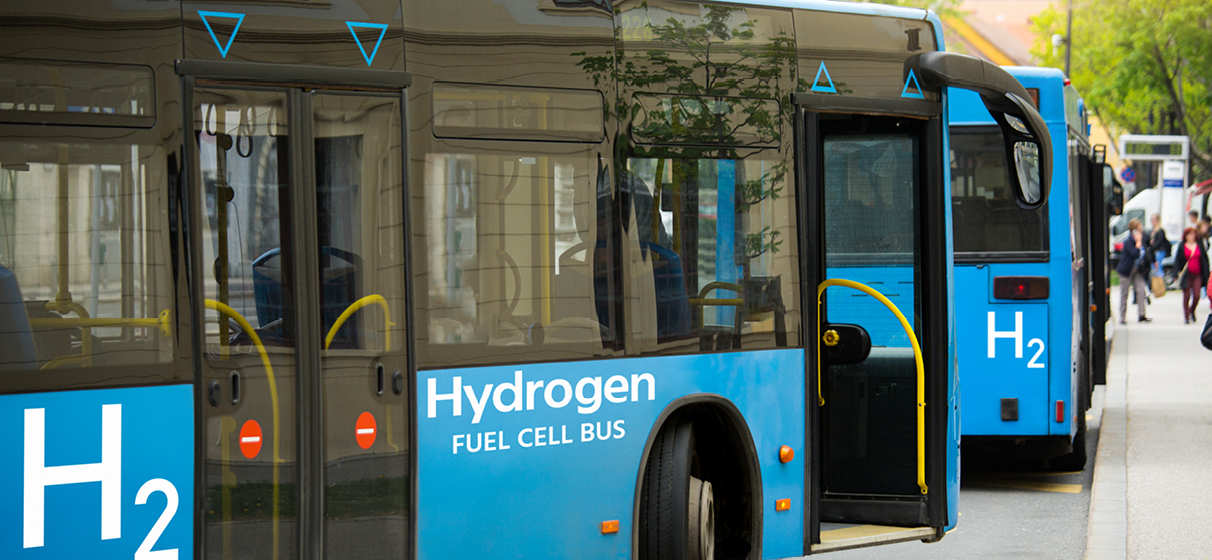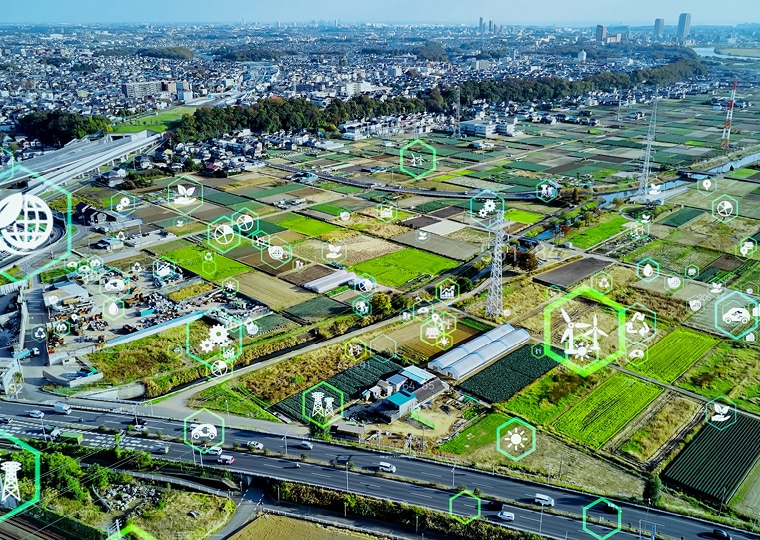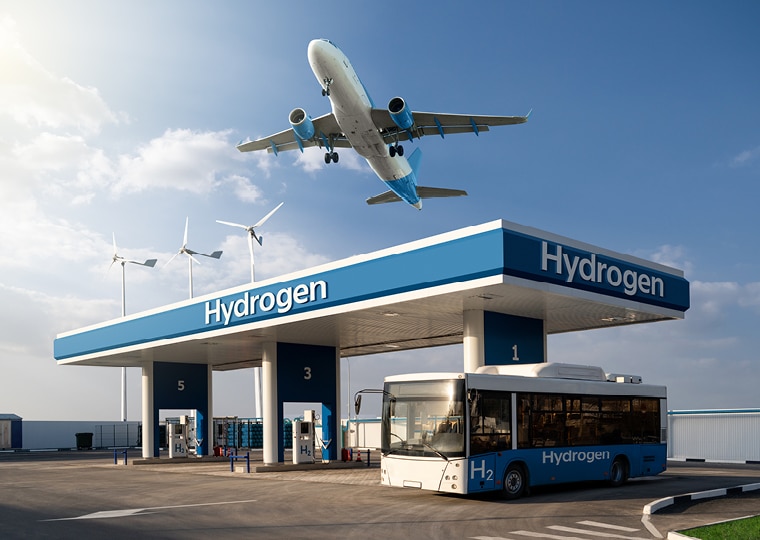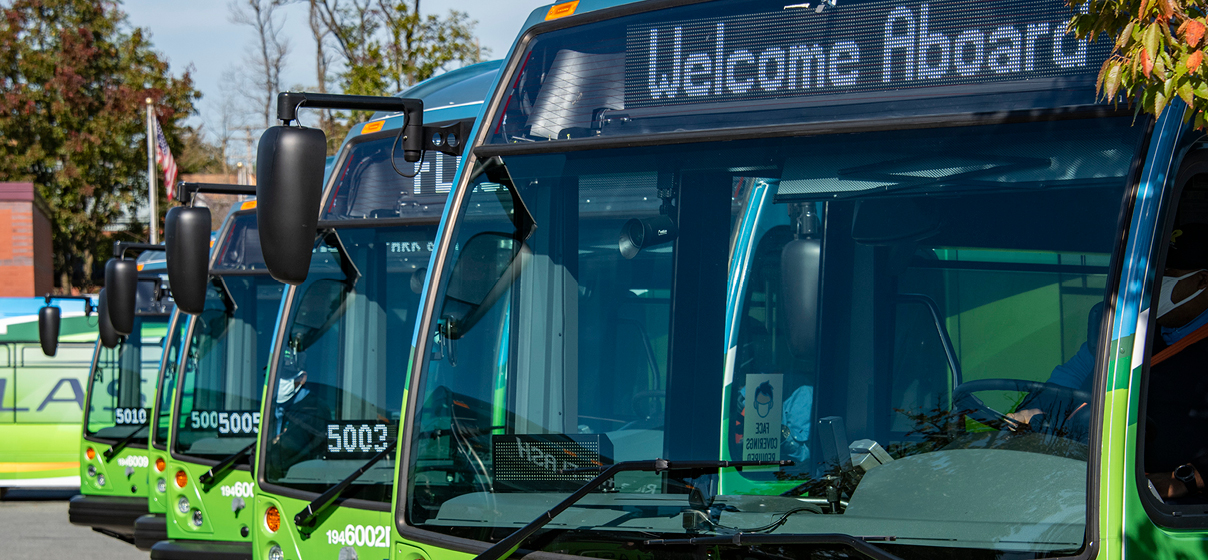As cities and transit agencies push toward cleaner transportation options, hydrogen fuel cell electric buses (FCEBs) continue to emerge as a promising solution to meet the growing demand for reliability and efficiency. Yet, the industry still faces changes around cost and industry consensus on safety and standards.
At the forefront of helping agencies navigate these complexities is Faye Farahmand, PE, STV’s zero emissions facility engineering lead and hydrogen expert. In addition to leading numerous presentations and panels on hydrogen safety and hydrogen’s future in zero-emission bus technology, Farahmand also recently contributed to a white paper developed by the Alliance for Clean Hydrogen Energy Systems (ARCHES), an initiative comprised of sustainability and transportation experts who are aiming to catapult renewable, clean hydrogen projects and infrastructure in California and across the nation.
In this interview, Farahmand addresses commonly asked questions about hydrogen as a fuel – from safety to transit applications and infrastructure – providing a clear and accessible overview for those exploring hydrogen’s role in a sustainable future.
1. How does hydrogen contribute as a more sustainable solution?
Hydrogen, which is abundant around the world, has the potential to replace fossil fuels in the transportation sector. Instead of relying on an internal combustion engine, a vehicle can have a fuel cell system that uses hydrogen to generate electricity that powers an electric vehicle. The only byproducts of this process are pure water and heat, resulting in zero harmful emissions in the atmosphere. Widespread adoption of this technology could eliminate millions of tons of carbon emissions.
2. How safe is hydrogen as a fuel?
Gasoline, compressed natural gas (CNG) and hydrogen are all classified as Class 1 hazardous materials. Many of us use gasoline daily and many transit agencies run CNG buses. We live in a world with many potentially hazardous substances around us that we benefit from when we use them correctly. The industry is aware of it and provides guidelines in codes and standards. Just like natural gas that heats our homes or stoves, we can benefit from hydrogen as a fuel source.
3. How does hydrogen compare with gasoline and CNG in terms of safety?
Hydrogen requires a 4% concentration in air to combust, while gasoline needs only 1.4%. This means gasoline is more easily flammable.
Hydrogen’s specific gravity is about 0.07 compared to air. This low specific gravity explains how quickly it will disperse outdoors, which can reduce fire risk. CNG and gasoline are heavier than hydrogen. Gasoline as a liquid, can spill and feed a fire.
4. What are the potential safety risks associated with hydrogen, and how can they be addressed?
When indoors, such as maintenance garages, a hydrogen leak can quickly reach its lower flammability limit – 4% by volume in air – especially in spaces without proper ventilation. A hydrogen detection system is essential to activate the appropriate ventilation, trigger alarms and send alerts to designated personnel.
Hydrogen flame is almost invisible and produce very little radiant heat, making it difficult to detect until one is dangerously close. Flame detectors are vital in hydrogen facilities.
Hydrogen systems, such as fueling and onboard fuel systems, require properly designed pressure relief and thermal protection mechanisms to ensure safe operation.
5. Is a hydrogen fuel cell vehicle considered an electric vehicle?
Yes. A hydrogen fuel cell electric vehicle (FCEV) is an electric vehicle because an electric motor powers it. The key difference between an FCEV and a battery electric vehicle lies in how the energy is provided to the vehicle. In a battery electric vehicle, electricity is stored in a battery and delivered through charging. In contrast, an FCEV stores hydrogen, which is converted into electricity onboard through a fuel cell system.
6. In what circumstances are hydrogen FCEBs a preferred option to battery electric buses (BEBs), and vice versa?
While both BEBs and FCEBs are valuable and necessary in the transit industry, certain circumstances make FCEBs a more appropriate choice. Key advantages of FCEBs include: a longer driving range, rapid refueling in just a few minutes (compared to hours for battery charging), lower infrastructure costs for large fleets, significantly reduced electrical power demand and a higher level of operational resilience. I discussed more details in an article I wrote for Mass Transit magazine.
7. What are the benefits of hydrogen fuel cell trucks?
The benefits are similar to those of buses. The extended driving range and fast refueling are significant benefits for heavy-duty trucks traveling long distances. A Class 8 truck equipped with a high-pressure hydrogen gas system onboard can travel approximately 450 miles while fully loaded, while the same truck using liquid hydrogen can reach up to 620 miles.








